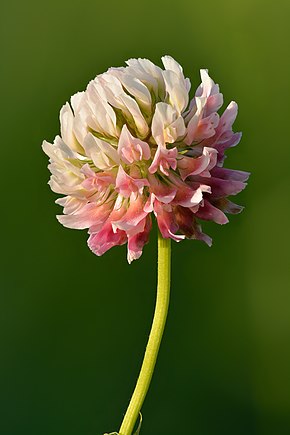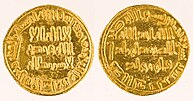From today's featured article
Al-Walid I (c. 674 – 715) was the sixth Umayyad caliph, ruling from October 705 until his death. The eldest son of Caliph Abd al-Malik (r. 685–705), he continued his father's efforts to centralize government, impose a more Arabic and Islamic character on the state, and expand its borders. He heavily depended on al-Hajjaj ibn Yusuf, his father's powerful viceroy over the eastern half of the caliphate. During his reign, armies commissioned by al-Hajjaj conquered Sind and Transoxiana in the east, while the troops of Musa ibn Nusayr, the governor of Ifriqiya, conquered the Maghreb and Hispania in the west, bringing the caliphate to its largest territorial extent. Al-Walid financed impressive public works, including the Great Mosque of Damascus, the al-Aqsa Mosque in Jerusalem, and the Prophet's Mosque in Medina. He was the first caliph to institute programs for social welfare, and his reign was marked by domestic peace and prosperity. (Full article...)
Did you know ...
- ... that the quasar 3C 345 has a jet (pictured) that appears to move five to fifteen times faster than the speed of light?
- ... that Patricia Davies and Jean Argles, two sisters who signed the Official Secrets Act as World War II codebreakers, did not find out about each other's top-secret work until the 1960s?
- ... that in 1978, Keine Kameraden's findings – that 3.3 million Soviet prisoners of war died of ideologically motivated mistreatment – caused a sensation in Germany?
- ... that 2023 Ecuadorian presidential candidate Luisa González was pepper-sprayed by the National Police while on her way to register her candidacy?
- ... that few decisions have instigated more discussion in German criminal law scholarship than an 1859 judgement of the Preußisches Obertribunal?
- ... that A Little Sound began uploading music to her YouTube channel when she was eleven years old?
- ... that Kenneth Halliwell murdered his lover Joe Orton with a hammer at their flat in London's Noel Road, before taking a drug overdose?
- ... that Ben Phillips replaced his friend's hair gel with superglue, put Viagra in his sports drink, and placed him on a lake while he slept on an inflatable mattress?
In the news
- Flooding and landslides in South Korea (pictured) leave at least 40 people dead and 6 others missing.
- In the United States, actors in the SAG-AFTRA trade union go on strike, joining writers in the Writers Guild of America strike.
- Flooding and landslides in northern India leave at least 100 people dead.
- Czech-French writer Milan Kundera dies at the age of 94.
On this day
July 19: Islamic New Year (2023, 1445 AH)
- 998 – Arab–Byzantine wars: After initial Byzantine gains at the Battle of Apamea, a lone Kurdish rider killed Byzantine commander Damian Dalassenos, allowing Fatimid troops to turn the tide of the battle.
- 1843 – SS Great Britain, the first ocean-going ship with both an iron hull and a screw propeller, was launched (pictured) in Bristol, England.
- 1845 – A fire in Manhattan, New York, destroyed 345 buildings, killed 30 people, and caused at least $5 million in damage.
- 1903 – French cyclist Maurice Garin won the first edition of the Tour de France.
- 2014 – Gunmen perpetrated an assault against an Egyptian military checkpoint in the Libyan Desert, killing 22 soldiers.
- Jacopo Tiepolo (d. 1249)
- Margaret Fuller (d. 1850)
- Han Sai Por (b. 1943)
- Galina Prozumenshchikova (d. 2015)
Today's featured picture

|
Trifolium hybridum, also known as the alsike clover, is a species of flowering plant in the pea family Fabaceae. The stalked, pale pink or whitish flower head grows from the leaf axils, and the trifoliate leaves are unmarked. The plant is up to 40 centimetres (1.3 ft) tall, and is found in fields and on roadsides – it is also grown as fodder (hay or silage). It blooms from spring to autumn. Originating in mainland Europe, it has become established as an introduced plant in the British Isles. This T. hybridum flower was photographed in Keila, Estonia. Photograph credit: Ivar Leidus
Recently featured:
|
Other areas of Wikipedia
- Community portal – The central hub for editors, with resources, links, tasks, and announcements.
- Village pump – Forum for discussions about Wikipedia itself, including policies and technical issues.
- Site news – Sources of news about Wikipedia and the broader Wikimedia movement.
- Teahouse – Ask basic questions about using or editing Wikipedia.
- Help desk – Ask questions about using or editing Wikipedia.
- Reference desk – Ask research questions about encyclopedic topics.
- Content portals – A unique way to navigate the encyclopedia.
Wikipedia's sister projects
Wikipedia is written by volunteer editors and hosted by the Wikimedia Foundation, a non-profit organization that also hosts a range of other volunteer projects:
-
Commons
Free media repository -
MediaWiki
Wiki software development -
Meta-Wiki
Wikimedia project coordination -
Wikibooks
Free textbooks and manuals -
Wikidata
Free knowledge base -
Wikinews
Free-content news -
Wikiquote
Collection of quotations -
Wikisource
Free-content library -
Wikispecies
Directory of species -
Wikiversity
Free learning tools -
Wikivoyage
Free travel guide -
Wiktionary
Dictionary and thesaurus
Wikipedia languages
This Wikipedia is written in English. Many other Wikipedias are available; some of the largest are listed below.
-
1,000,000+ articles
-
250,000+ articles
-
50,000+ articles



